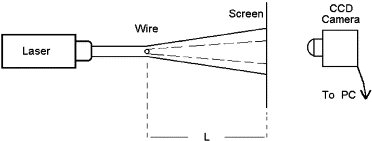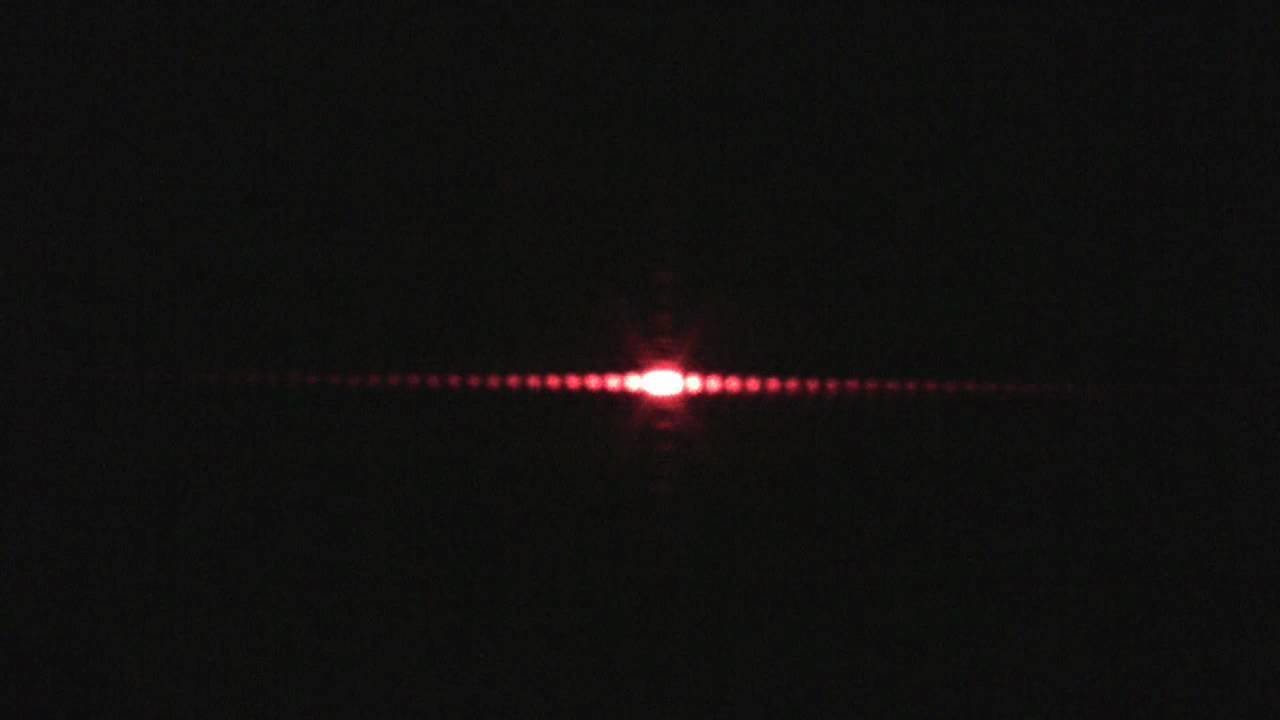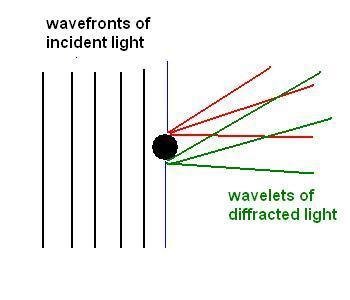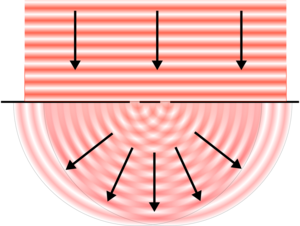Exploring Quantum Mechanics
with your laser pointer!

Dr. Justin Dressel
Assistant Professor of Physics
Shiva Barzili & Aaron Grisez
Chapman University Students

What is a LASER?


Index card
Tape
Thin Wire
Window
Sophisticated Apparatus I

Sophisticated Apparatus I
Shine laser on wire, with the wire in the exact center of the laser beam.
Display the beam on a blank index card, far away from the wire (5-10ft).
What do you see? What does it mean?
Water wave interference
Laser interference



Single photon interference
Single photon interference
Questions:
If light hits the screen as individual small spots (photons), how can there be wave-like interference?
Doesn't each photon have to choose which way it goes around the wire?
Each photon could only produce interference if it went both ways around the wire like a wave does.
What happens if we try to watch which way it went?
Tagging light with polarization

Idea : Use the polarization of light to record which side of the wire it goes around
Light has another property called "polarization".
A "polarizer" blocks part of the light so that only one type of polarization can pass through.
Two crossed polarizers
block all the light.
Polarization Questions:
- What if the polarizers are not crossed at 90 degrees?
- What happens if you put a third polarizer in between?
- If light is a wave, can you explain this behavior?
- If light is made of individual photons that can either pass through each polarizer or get absorbed by the polarizer, can you explain this behavior?

Hint:

Index card
Tape
Thin Wire
Sophisticated Apparatus II
Polarizer
Crossed Polarizer
Idea : Polarization now records which side of the wire photons go around

Sophisticated Apparatus II
Shine laser on wire, with the wire in the exact center of the laser beam, and equal parts going through each polarizer.
Display the beam on a blank index card, far away from the wire (5-10ft).
What do you see? What does it mean?
Quantum Measurement
By "looking" at which way the photons went around the wire using the polarizing filters, the photons must "choose" which way they actually went.
Forcing this choice prevents the photons from interfering with themselves like waves, so the interference pattern vanishes!
Photons only behave like waves when you don't look at which way they went.

But wait, there's more!
Shine laser on wire, with the wire in the exact center of the laser beam, and equal parts going through each polarizer.
Display the beam on a blank index card, far away from the wire (5-10ft).
What do you see? What does it mean?
Put a third polarizer after the wire!
Quantum Erasure
Before the third polarizer, the photons have been "tagged" with polarization information that records which way they went.
If the third polarizer is aligned with one of the tags, it selects only those photons that went around one side of the wire: no interference pattern is visible.
However, if the third polarizer is at 45 degrees, it erases the information about which way the photons went:
the interference pattern reappears!
Dazzle your Friends


Thank you!